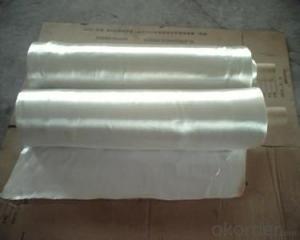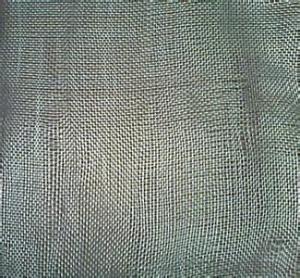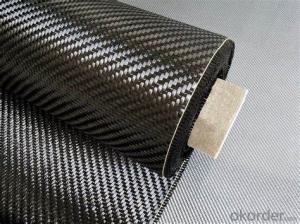Neoprene Coated Fiberglass Fabric Silica Fiber Cloth for Reusable Heat Insulation Jacket
- Loading Port:
- China Main Port
- Payment Terms:
- TT OR LC
- Min Order Qty:
- -
- Supply Capability:
- -
OKorder Service Pledge
Quality Product, Order Online Tracking, Timely Delivery
OKorder Financial Service
Credit Rating, Credit Services, Credit Purchasing
You Might Also Like
Quick Details
| Type: | Place of Origin: | Brand Name: | |||
| Model Number: |
Packaging & Delivery
| Packaging Detail: | According to buyer's requirement. |
| Delivery Detail: | Depend on the purchase order quantity. |
Specifications
Ceramic-fiber Woven Cloth, Ribbon, Square/Round Braided Packing & Rope, High Silica Cloth, Fiberglass Woven Cloth.
Silica fiber cloth for reusable heat insulation jacket , cover , pad
- Q: Can fiberglass fabric be used in marine applications?
- Yes, fiberglass fabric can be used in marine applications. It is a popular choice due to its durability, strength, and resistance to corrosion and water damage. It is commonly used for boat construction, as well as in the manufacturing of marine components such as hulls, decks, and panels.
- Q: What is the typical tensile strength of fiberglass fabrics?
- The typical tensile strength of fiberglass fabrics can vary, but it is generally around 300-600 MPa (megapascals).
- Q: Can fiberglass fabric be used for reinforcing plaster or stucco?
- Yes, fiberglass fabric can be used for reinforcing plaster or stucco. It provides strength and durability to the plaster or stucco, preventing cracking and improving its overall structural integrity.
- Q: Are fiberglass fabrics resistant to rot or decay?
- Certainly, fiberglass fabrics possess an inherent resistance to rot or decay. The reason behind this lies in the composition of fiberglass itself, comprising fine glass fibers combined with a polymer resin. This unique blend grants fiberglass a remarkable resilience against moisture, chemicals, and external elements that typically lead to rot or decay in alternative materials. Moreover, the impermeable nature of fiberglass hinders the growth of mold, mildew, or bacteria, ultimately preventing any potential deterioration. Consequently, fiberglass fabrics emerge as an ideal choice for a variety of applications that require resistance to rot or decay, including outdoor furniture, boat hulls, and building materials, due to their exceptional durability and long-lasting properties.
- Q: What is the difference between epoxy fiber glass cloth flooring and anticorrosive floor?
- The two floor effect is not very ideal, for one or two years will appear after the cracking and hollowing phenomenon of pit even powdering.
- Q: Can fiberglass fabric be used for reinforcement in boat hulls?
- Yes, fiberglass fabric can be used for reinforcement in boat hulls. It is a common and popular material for strengthening and reinforcing boat structures due to its high strength-to-weight ratio, durability, and resistance to water and corrosion.
- Q: Can fiberglass fabric be used for making window screens?
- Yes, fiberglass fabric can be used for making window screens. It is a popular choice due to its durability, resistance to corrosion and insects, and its ability to provide good visibility and airflow while keeping bugs out.
- Q: What is the weight of fiberglass fabric?
- The weight of fiberglass fabric can vary depending on the specific type and thickness of the fabric. Generally, fiberglass fabric is measured in ounces per square yard (oz/yd2) or grams per square meter (g/m2). Common weights for fiberglass fabric range from 0.5 oz/yd2 (17 g/m2) to 3.0 oz/yd2 (102 g/m2) or more. Lightweight fiberglass fabrics are often used for applications such as reinforcing and laminating, while heavier fabrics are commonly used for structural reinforcement or insulation purposes.
- Q: Is fiberglass fabric suitable for making outdoor furniture covers?
- Yes, fiberglass fabric is suitable for making outdoor furniture covers. Fiberglass fabric is known for its durability and resistance to harsh weather conditions, making it an excellent choice for protecting outdoor furniture from rain, sun, and wind. It is water-resistant, UV-resistant, and can withstand extreme temperatures without deteriorating or fading. Additionally, fiberglass fabric is lightweight, making it easy to handle and install on furniture. It is also resistant to mold, mildew, and pests, ensuring that your furniture remains clean and protected. Overall, fiberglass fabric is a reliable and long-lasting option for making outdoor furniture covers.
- Q: What is Teflon?
- Teflon English called Polytetrafluoroetylene, referred to as Teflon, PTFE and F4. High performance special Teflon coating is fluorine coating resin with polytetrafluoroethylene, English name for Teflon, because the pronunciation of the reason, is usually known as Teflon molecular image
Send your message to us
Neoprene Coated Fiberglass Fabric Silica Fiber Cloth for Reusable Heat Insulation Jacket
- Loading Port:
- China Main Port
- Payment Terms:
- TT OR LC
- Min Order Qty:
- -
- Supply Capability:
- -
OKorder Service Pledge
Quality Product, Order Online Tracking, Timely Delivery
OKorder Financial Service
Credit Rating, Credit Services, Credit Purchasing
Similar products
Hot products
Hot Searches
Related keywords






















